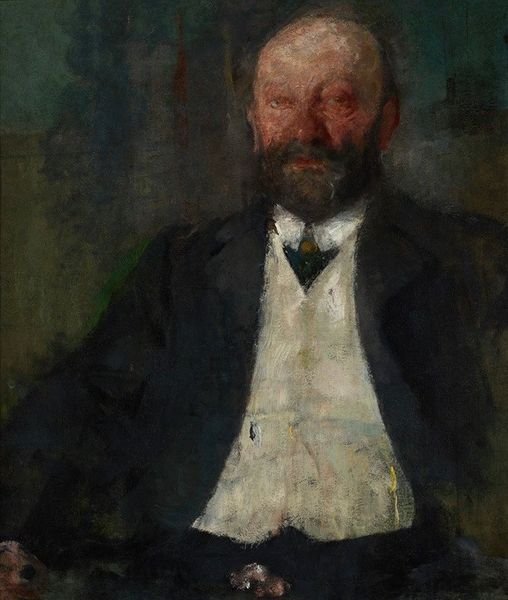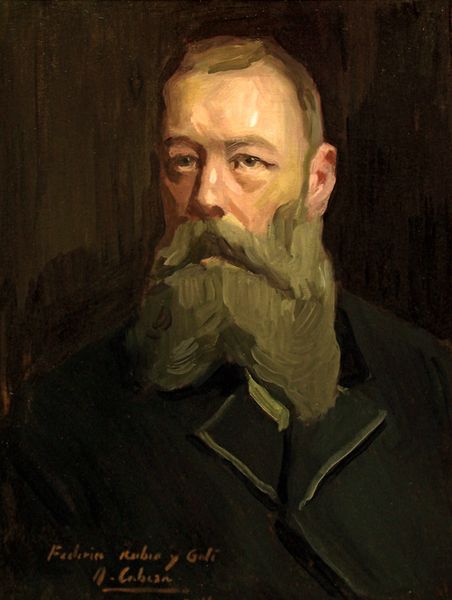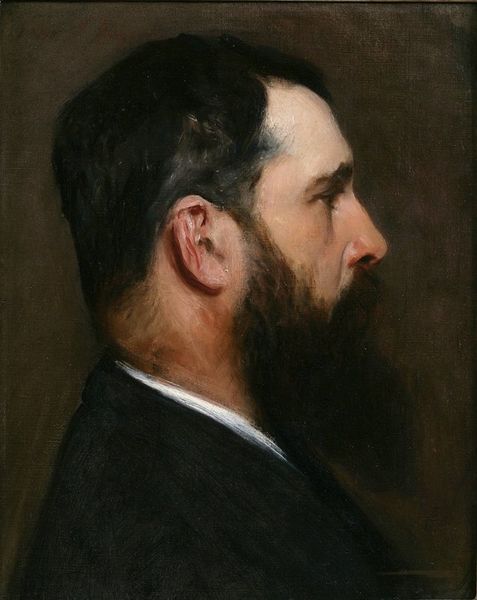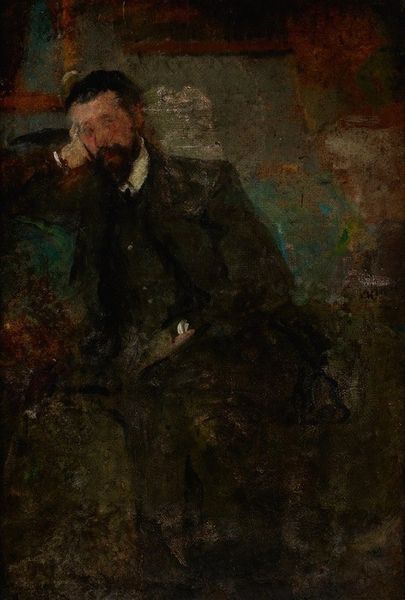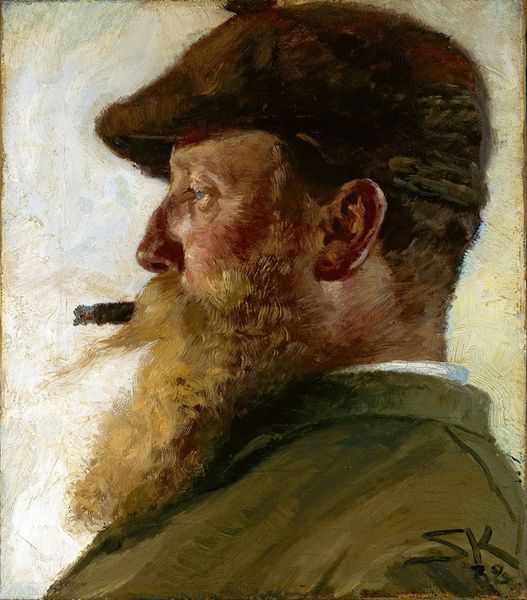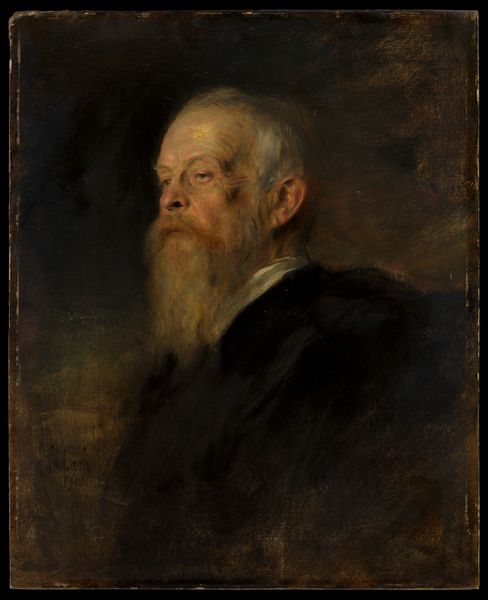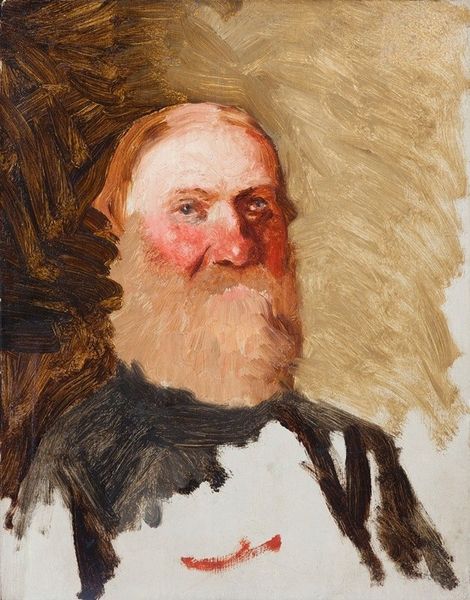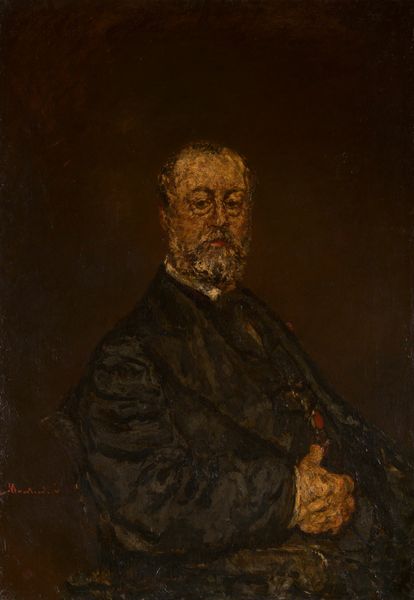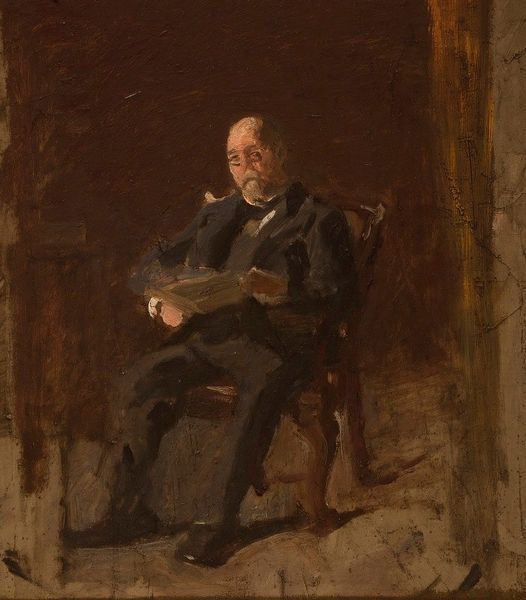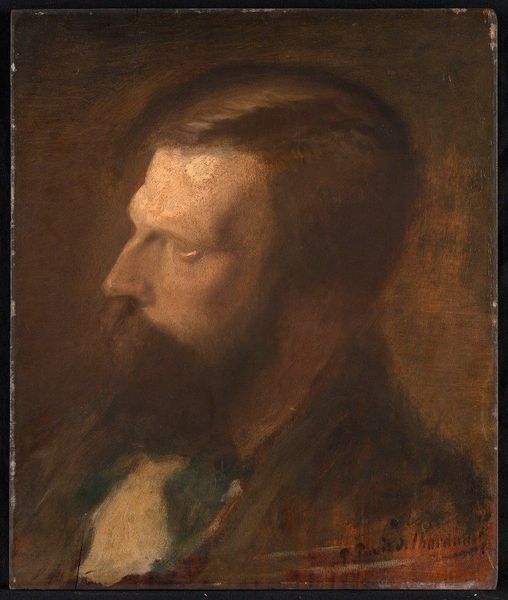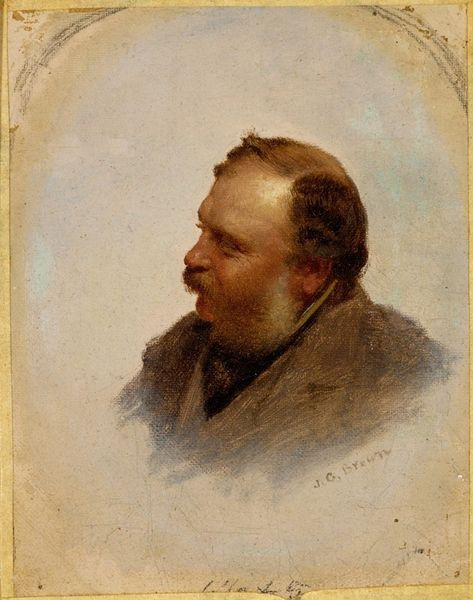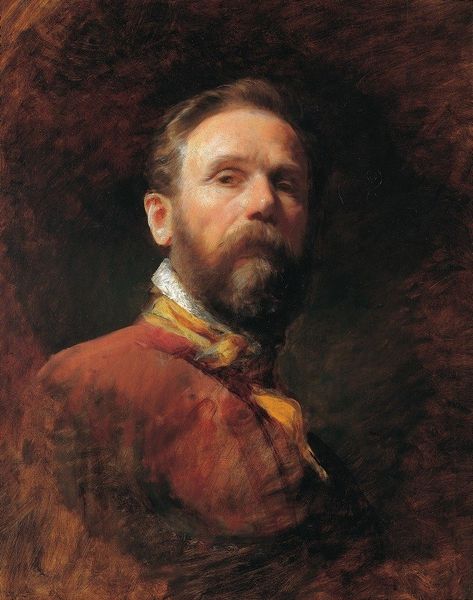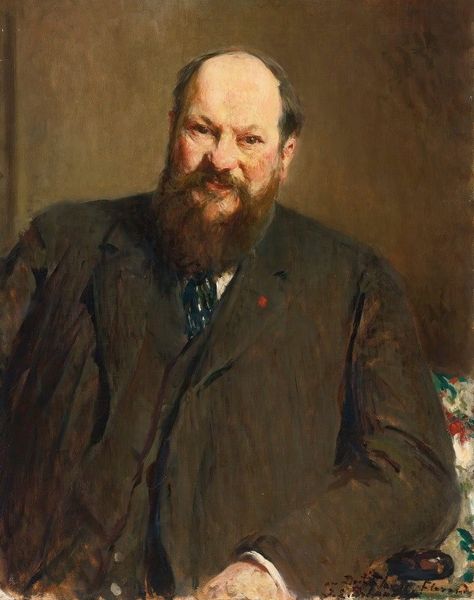
Copyright: Public Domain: Artvee
Giovanni Boldini painted this portrait of Ferdynand Bryndza using oil on canvas, with visible brushstrokes creating a sense of immediacy. Boldini’s loose, energetic handling of the paint is central to the work's effect. The visible brushwork and unfinished quality suggest speed and spontaneity, which were highly valued during this period. This rapid style, akin to sketching, allowed artists to capture fleeting moments and impressions, reflecting a shift away from highly finished, academic painting styles. The artist's skill lies in evoking form and character with minimal effort, a technique that emphasizes the artist's virtuosity. The material and the making of the work are closely linked to its social context, reflecting the rise of a new class of wealthy patrons who valued individuality and modernity. This approach challenged traditional notions of artistic labor, blurring the lines between fine art and the more gestural and expressive qualities valued in sketching. Ultimately, it's the synthesis of material, process, and social context that gives the portrait its enduring appeal, inviting us to reconsider the boundaries of art and craft.
Comments
No comments
Be the first to comment and join the conversation on the ultimate creative platform.
